 Romek Gelard Gello
Romek Gelard Gello Rebekah Wing
Rebekah Wing Kristin G
Kristin G Martina M
Martina M Lina S
Lina S
 On Wednesday 5th May Topshop launched its first very own make-up range; containing all the must have make up essentials for SS10.
On Wednesday 5th May Topshop launched its first very own make-up range; containing all the must have make up essentials for SS10.
The full collection comes in two parts and will be refreshed twice a season; a Core Collection of first class beauty essentials as well as a capsule Trend Collection of directional hues, both embody the bold and innovative essence of Topshop.
With its first make up range, Topshop has ensured its cosmetics encapsulate the Topshop spirit, by formulating it with a mixture of directional colours and seasonal collections. Inspired by a World Tour, Topshop have injected their knowledge of trends, colours and textures to create an original fresh approach to make up.
Topshop has teamed up with top make-up artist Hannah Murray; renowned for her work on the catwalks in some of London’s most influential fashion houses to help launch the new range. The two last collaborated when Murray worked on the AW10 Unique show, hosted by Topshop at London Fashion Week in February 2010.
To celebrate the May launch, Topshop is partnering with TAAZ.com, to launch its new Online Makeover tool. The tool will allow customers to digitally ’try on’ a variety of preloaded photos - or upload their own photos - to see what product best suits them for the complete Topshop makeover.
Kate Walmsley, Head of eCommerce for Topshop, comments: “We wanted our customers to be able to interact and play with Topshop Make Up online. The quality of the TAAZ.com virtual makeover tool and the ability to customise the experience to reflect the Topshop brand made them the perfect partner. It’s so much fun, it had all the girls at Topshop HQ instantly addicted!”
 They are charming ladies. They are female legendary figures who played important roles in the fashion history. They are from various fields and all got remarkable achievements in their careers.
They are charming ladies. They are female legendary figures who played important roles in the fashion history. They are from various fields and all got remarkable achievements in their careers.
They are "Pioneers of American Fashion Industry."
 From a historic point of view, for more than 2,000 years hemp has been an important raw material for industry. Hemp fibres were used for technical textiles such as ropes, hawsers, boat canvas as well as clothing textiles and paper. In the 1990s, hemp was rediscovered throughout the world as an important raw material for bio-based products in a sustainable bioeconomy and ever since then has been in high demand.
From a historic point of view, for more than 2,000 years hemp has been an important raw material for industry. Hemp fibres were used for technical textiles such as ropes, hawsers, boat canvas as well as clothing textiles and paper. In the 1990s, hemp was rediscovered throughout the world as an important raw material for bio-based products in a sustainable bioeconomy and ever since then has been in high demand.
The most important cultivation and manufacturing regions are Europe and China, and the most important applications are bio-based composites (natural fibre reinforced plastics) as well as construction and insulation materials. The bio-based materials sector in particular still has large, untapped market potentials for both the reinforcement of mineral oilbased plastics and, to an increasing degree, for bio-based plastics.
Success story automotive industry: Current trends and new applications
In the year 2005 - more recent data is not available - 30,000 tons of natural fibre composites (EU: 40,000- 50,000 t), wood not included, were used in the automotive industry, requiring 19,000 tons of natural fibres (EU: 30,000 t). European flax (about 65%) and hemp (about 10%) were used, with the remaining 25% covered by imports from Asia (jute, kenaf, coir, abaca). Natural fibre compression moulding is the dominant processing technique (share of > 95%), it is an established and proven technique for the production of extensive, lightweight and high-class interior parts in medium and luxury class cars. Advantages are lightweight construction, crash behaviour, deformation resistance, lamination ability, depending on the overall concept, and also price.
The disadvantages are limited shape and design forming, off-cuts, and cost disadvantages in the case of high part integration in construction parts. These advantages and disadvantages are well known. Process optimisation is in progress,in order to reduce certain problem areas such as offcuts and to recycle wastage. By means of new one-shot compression moulding presses, soft surfaces can also be directly integrated, something that has not been possible so far with injection moulding.
Between 2005 and 2009, the use of natural fibres in the European automotive industry did not expand, and in Germany even slightly decreased, after it had grown in double-digit figures each year between 2000 and 2005. Since 2009, however, there has been an increasing demand again: new models from almost all automotive companies that will be released on the market this or next year do have considerably more interior parts, made once again with natural fibre reinforcement. On the one hand this is due to the high development of the materials and the fact they have proven themselves in practice, but on the other hand it is also due to the increasing interest by the automotive industry in bio-based materials and lightweight construction – in both fields, natural fibre construction parts can score. In addition, further cost and weight reductions were achieved in recent years especially with regard to compression moulding.
Furthermore new trends are becoming apparent: the automotive manufacturers do not only want to use bio-based materials, but also want to show them to their customers. While up to now natural fibre construction parts have disappeared under a lamination, thus becoming invisible to the customer, in the near future vehicles will be released on the market that will exhibit the natural fibres under transparent films or lacquers, showing completely new surface effects. Another trend can be noticed in the development of making the plastics matrix bio-based as well, i.e. producing interior parts from PLA or bio-based PP and natural fibres. While such 100% bio-based compounds will soon be found in Japanese cars, in Europe this still will take a while.
With demand increasing again, new concepts and the support of bio-based products by politics, sales of 40,000 to 50,000 t of natural fibres could be achieved in Europe by 2015, at least 10-20% of which could be supplied by European hemp.
Insulation materials and many other applications
The second road to success are hemp insulation materials of which about 3,000 to 4,000 tons are produced annually and put on the market in the EU. The most important manufacturers and users are Germany, France and Great Britain respectively. The hemp insulation material properties are very good and appreciated by customers. Achieving bigger sales markets is solely hampered by the relatively high price compared to mineral fibre insulation materials. Here only suitable economic-political framework conditions can be of help. Apart from the automotive and construction industry, there are numerous applications with a smaller volume such as briefcases, other cases, various consumer goods (e.g. letter scales, battery chargers, toys) or trays of grinding/sanding disc and urns. The latter are a good example of a 100% bio-based product: The urns are produced from PLA, reinforced by hemp fibres, and are fully biodegradable.
As well as the examples mentioned, in addition to the aforementioned compression moulding, injection moulding plays an important role. The increasing availability of high-grade natural fibre injection moulding granulates will help to quickly develop new applications here.
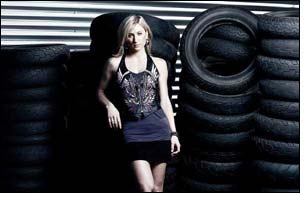 BIRKS is proud to announce that Joannie Rochette, Canadian figure skater and 2010 Olympic bronze medalist, will be the latest face of the brand. Joannie won the hearts of Canadians, Olympic fans worldwide, and BIRKS, when she took to the ice for the ladies long program at the 2010 Olympic Games in Vancouver, British Columbia.
BIRKS is proud to announce that Joannie Rochette, Canadian figure skater and 2010 Olympic bronze medalist, will be the latest face of the brand. Joannie won the hearts of Canadians, Olympic fans worldwide, and BIRKS, when she took to the ice for the ladies long program at the 2010 Olympic Games in Vancouver, British Columbia.
"Joannie mesmerized the audience that night with an incredible performance - she embodied courage, elegance and grace under pressure. I met Joannie previously, at a BIRKS dinner, and her enthusiasm for the brand is contagious. We are so very happy to welcome her to the BIRKS family," says Tom Andruskevich, President and CEO of Birks & Mayors Inc.
"I am overjoyed to be embarking upon this relationship with BIRKS," said Joannie. "I have been enamored with this iconic, Canadian brand since my childhood, and it's an honor for me to be able to represent the brand and make that emotional connection with BIRKS' clients."
Joannie's strength and perseverance on the fateful night of her skate touched the hearts of people around the world, and she continues to impact people's lives by being a great role model.
Rochette is a spokesperson for the iheartmom campaign, an initiative designed to promote awareness on the causes of heart disease and to raise funds for research and treatment.
She is dedicated to this cause and hopes, that through education, others can be spared the pain that comes with the untimely loss of a loved one.
The confident manner, elegance, artistry and creative sensibility that Joannie exudes is what makes her inspirational to so many. BIRKS and Joannie look forward to using these qualities as creative stimulation to develop something tangible - a spectacular piece of jewellery, which will support the campaign that is closest to Joannie's heart, iheartmom.
Birks & Mayors, Inc. is a leading operator of 64 luxury jewellery stores in the United States and Canada. As of May 10, 2010, the Company operated 33 Birks stores across most major metropolitan markets in Canada and 29 Mayors stores across Florida and Georgia, as well as two retail locations in Calgary and Vancouver under the Brinkhaus brand. Founded in 1879, BIRKS is Canada's premier luxury brand and is the Official Supplier of Jewellery for the 2010 Olympic and Paralympic Winter Games.
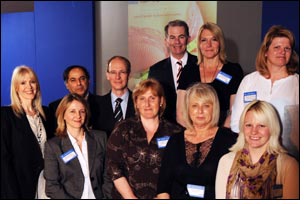 Over 120 delegates from the lingerie and swimwear sectors attended the recent The Association of Suppliers to the British Clothing Industry (ASBCI) seminar, organised in partnership with De Montfort University and Lingerie Buyer magazine, to hear some of the most influential retailers and brands unite in a bid to improve bra ‘fit’ standards.
Over 120 delegates from the lingerie and swimwear sectors attended the recent The Association of Suppliers to the British Clothing Industry (ASBCI) seminar, organised in partnership with De Montfort University and Lingerie Buyer magazine, to hear some of the most influential retailers and brands unite in a bid to improve bra ‘fit’ standards.
For the first time, the seminar entitled ‘Shaping up for lingerie & swimwear – defining the challenges, exploring the solutions’, brought together ten eminent speakers and an expert panel from the medical, contour fashion, sizing, design, brand, retail and technology sectors to share their expertise with the wider industry.
Speakers were responding to a recent Which Report? on bra fit that found less than one in three consumers received the correct sizing and fit advice when purchasing a bra. In response to the report’s findings ASDA’s George Clothing used the seminar to launch a new Bra Retailers’ Association, BRA, aimed at getting retailers and brands to share their expertise in a bid to create a consistent UK bra size and fit standard.
Laura Savery, senior lecturer at De Montfort University within its contour department, detailed the findings of the Which? bra fit report on which she was involved as an expert. The report ‘Bra Fitting? No it isn’t’ (published Feb 2010) focused on the in-store service and advice given to larger breasted women. Which? sent 11 fieldworkers with bust sizes ranging from a DD to a 40GG cup size, aged 25 to 75 into six high street stores Bravissimo, Debenhams, House of Fraser, John Lewis, La Senza and Marks & Spencer. A total of 70 fittings were assessed against a set of measured criteria, for example correct underband fit and cup capacity, of which 18 scored zero. For one fieldworker the advice she received on correct bra size varied from a 34FF to a 40D; a variation of seven sizes. Laura Savery concluded with the words of the Which? report: “If stores offer this service it needs to be taken seriously: do it properly or don’t do it at all.”
Responding to the report’s findings Karen Flude, ladies’ garment technologist lingerie & swimwear with George Clothing, explained: “women are at best confused and at worst angry with the conflicting sizing and fit advice they receive when purchasing a bra in a high street store.
The result is customer complaints, customer returns and lost business.” It is time she told delegates to “work together to turn our reputations around.” To this end she put forward the UK’s first standardised bra initiative and launched the Bra Retailers’ Association, BRA in which suppliers can pool their expertise and create a “fit assured bra” standard for UK cup-sized apparel.
She stressed that brand individuality could be achieved through colour, style, fabric and trim variations. She proposed that BRA should offer members a “starter pack” containing base shapes and patterns, fabric advice and a “sourcing bible” of suppliers who share BRA’s commitment to a fit standard. Consumer focus groups, information packs for schools and customers, a BRA kitemark in addition to a PR campaign would be driven by BRA and its members.
She concluded: “We need to standardise our base-sized models…share our innovations and customer information. Communication is critical..but we owe it to our customers to get off our high horses and give them what they want.”
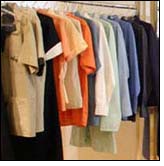 The Sri Lankan clothing manufacturing and exporting sector is working towards a sustainable growth by meeting mid and long-term challenges. The immediate challenge in the next five years is to develop backward and forward linkages in the textile value-chain.
The Sri Lankan clothing manufacturing and exporting sector is working towards a sustainable growth by meeting mid and long-term challenges. The immediate challenge in the next five years is to develop backward and forward linkages in the textile value-chain.
The apparel industry is aiming to reach US $5 billion in exports from the sector by 2015. The major challenges faced by the industry will be to control costs, to operate within the current labour laws and to set up an effective supply chain.
Fibre2fashion spoke exclusively to Mr Rohan Masakorala, Secretary General of Joint Apparel Association Forum (JAAF), which is the apex body for the apparel manufacturing and export sector in the island country.
When quizzed about the major challenges faced by the industry to bring growth in exports, he answered by saying, “We need to develop trade relations mainly with China, Japan, India, Brazil and also develop trade arrangements, particularly in the North American markets, along with which we need to increase productivity and offer something different in the markets."
When asked about the strategy being used by Sri Lanka to compete with the other apparel exporting countries, he said, “Sri Lanka is a high quality reliable destination. We have to focus on ethical and green manufacturing, along with which we also need to focus on speedy deliveries”.
 Bashful Bump, LLC will introduce the first and only maternity bodysuit collection made by a mom for expecting moms this Summer.
Bashful Bump, LLC will introduce the first and only maternity bodysuit collection made by a mom for expecting moms this Summer.
"While pregnant with my second child, I was thrilled to find that my favorite designers were coming out with maternity lines. Finally, I could be pregnant and still be able to dress and feel like my normal self," explains Bashful Bump Founder and Creative Director, Amy Naylor. She adds, "As my closet filled with fabulous maternity low rise jeans and designer track pants, I found myself constantly tugging my shirt down to cover my exposed belly and lower back. I wanted something that wouldn't creep up, something that could become the foundation of my new maternity chic wardrobe. I needed a maternity bodysuit."
After extensive research and development, Bashful Bump went from one mother's concept to a sophisticated collection for all expecting mothers. Made from 92% Tactel nylon and 8% Lycra spandex, the maternity bodysuit features a built-in shelf bra to provide light support and a patented, easy to access, "Maternity Forward Snap Placement" to provide all day comfort and easy closure accessibility. The collection is designed to be worn every day, just as the basic tank or t-shirt. A modern maternity essential, the four simple designs consist of the basic wardrobe necessities: camisole, tank top, cap sleeve, and 3/4 sleeve. The bodysuits can be worn as a top or layered under other favorite maternity wear, a smart and versatile investment for pregnant women of all sizes and frames. Expecting mothers will no longer have to worry about flashing their belly or lower back and with Bashful Bump Maternity Bodysuits, they will never have to tug their shirts down again.
Bashful Bump, LLC, is a San Francisco bay area company established on July 31st, 2009. Founder and Creative Director, Amy Naylor, is a proud mother of three young children. The mission of Bashful Bump is to create a comfortable, basic, and versatile collection of maternity bodysuits for all expecting mothers, all seasons.
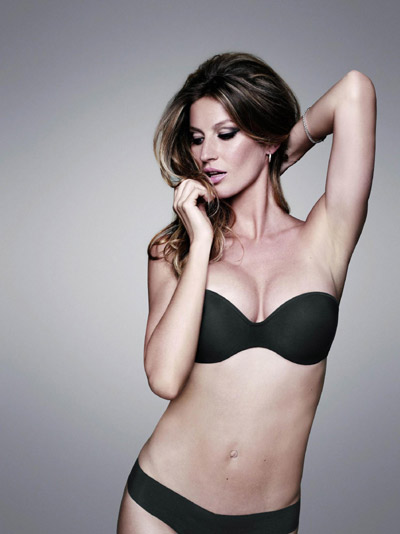 Brazilian model Gisele Bundchen poses for the Hope lingerie company's latest ad campaign, in a handout photo released May 8, 2010. Bundchen returned to star in an ad campaign for lingerie and showed good form a few months after the birth of her first son, Benjamin.
Brazilian model Gisele Bundchen poses for the Hope lingerie company's latest ad campaign, in a handout photo released May 8, 2010. Bundchen returned to star in an ad campaign for lingerie and showed good form a few months after the birth of her first son, Benjamin.
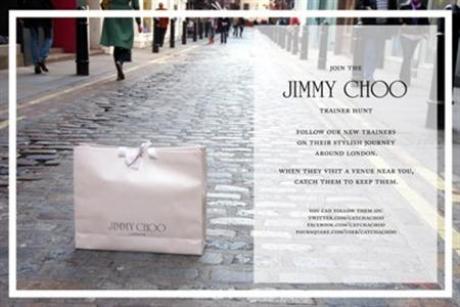 Shoe lovers in London have been glued to their mobile devices and computer screens in a race to win a pair of free Jimmy Choos.
Shoe lovers in London have been glued to their mobile devices and computer screens in a race to win a pair of free Jimmy Choos.
The Jimmy Choo trainer hunt or "CatchAchoo" race offers the winner the chance to keep a free pair of the shoes so loved by celebrities if they can figure out where they are in London according to clues left on social networking sites Twitter, Facebook and foursquare.com.
A picture of a Jimmy Choo bag is taken in the location and left on the sites, where a company representative will wait for a short period of time with the shoes on display.
Those who have figured out the clue must race to the location, approach the representative and say: "I've been following you" to win the shoes.
The competition, which has been running since April 19th will carry on until someone wins the prize.
"There have been some close shaves when people have missed the shoes by a minute or two. But it triggers the motivation to catch them next time," a Jimmy Choo spokeswoman said in an emailed statement to Reuters.
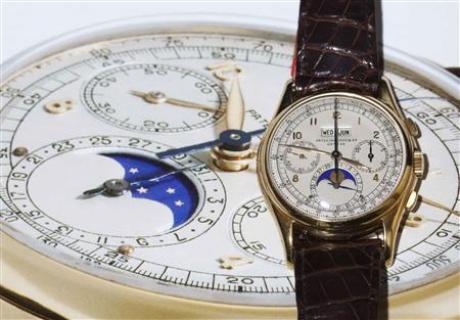 Huge diamonds and gems with royal cachet are expected to fetch strong prices next week as buyers chase unique pieces in a revived international jewelry market, rival auction houses said on Friday.
Huge diamonds and gems with royal cachet are expected to fetch strong prices next week as buyers chase unique pieces in a revived international jewelry market, rival auction houses said on Friday.
The semi-annual sales in Geneva, Europe's capital for jewels on the block, follow highly successful results in both Hong Kong and New York, according to Christie's and Sotheby's.
Collectors from Asia, especially China, and the Middle East are increasingly bidding for top-quality gems in the Swiss city alongside traditional buyers from Europe and the United States.
"The market now seems to have returned in great strength. Last year was one of our best years," David Bennett, chairman of Sotheby's Europe and Middle East jewelry department, told Reuters in an interview.
Sotheby's, which had record sales in Hong Kong last month, expects to net 35 million Swiss francs ($32.77 million) at its jewelry and watch sales in Geneva.
"The vast majority of the sale comes from private owners. Virtually all the noble section has never been on the market before. The jewels are fresh and quality is very high," he said.
"Period jewelry, collection jewelry and noble jewelry are getting scarcer and scarcer. Competition is growing and estimates are being exceeded quite comfortably. Also for fine diamonds and colored stones," Bennett added.
Jean-Marc Lunel, head of Christie's jewelry department in Switzerland, said buyers are paying top prices for high-quality diamonds, colored gem stones and jewels of special provenance.
"Colored diamonds take the direction of Hong Kong. In Geneva, we are focusing on fine quality, signed pieces from French master jewelers," he told Reuters, pointing to pieces by Cartier, Van Cleef & Arpels, Boivin and Chaumet.
CHINESE ACTIVE BIDDERS
As Chinese buyers now take home roughly 20 percent of its jewelry, privately held Christie's has moved Brenda Kang, a Chinese-born Singaporean expert, to its Geneva offices.
"The Chinese are very, very active in the jewelry field. They have a lot of interest but are not always successful, they are also under-bidders. But they are bidding actively and fiercely in all our jewelry auctions," Lunel said.
Christie's estimates that its Wednesday night sale will fetch between 23 million and 33 million Swiss francs.
Its star lot is a flawless rectangular-cut white diamond weighing 40.21 carats, estimated at $4.5 million to $5.5 million. A stunning necklace set with 20 round diamonds, known as a riviere, could go for $1.8 million to $2.4 million.
Christie's also offers a diamond and enamel brooch designed by award-winning British jeweler Shaun Leane, who named it "White Light" after being inspired by a Dylan Thomas poem about the first snow of winter.
"It is an extraordinary jewel, a modern contemporary creation and of course a unique piece," Lunel said of the brooch, estimated at $1 million - $1.5 million and whose cascading diamonds weigh a total of nearly 41 carats.
Star lots at Sotheby's sale on Tuesday are an emerald-cut white diamond of 52.82 carats and a ring by French jeweler Alexandre Reza mounted with a vivid blue diamond of 5.02 carats alongside a white diamond of the same pear-shape of 5.42 carats.
The large white diamond is type IIa -- the top grading for both polish and symmetry, meaning it is the most pure.
"It's a new stone, therefore the buyer has the possibility of naming it," Bennett said of stone, estimated to fetch $7 million.